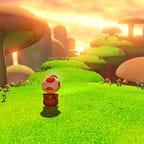We Need More Books Like ‘A Little History of the World’
Why one history book is a blueprint for how historians should write for popular audiences
Recently, I finished E.H. Gombrich’s A Little History of the World. True to its name, this book crams much of the history of humanity into a short, readable volume that’s just under 300 pages. It’s really good — a remarkable distillation of so much information into such a short account.
After finishing Gombrich’s book, I’m left with one overriding conclusion: we need more history books like this. We need more accounts that capture the wonder and beauty of history, more books that make it interesting and readable. Gombrich’s narrative isn’t perfect, but it’s one of the best love letters to the study of history that I’ve ever read.
One of the best reasons to read A Little History of the World is that it condenses thousands of years of history into just a few pages. But it’s not just the raw information that’s valuable here — Gombrich’s writing style is easy to follow and joyfully points out the important discoveries and moments that gradually created the world we live in now. He tells the history of the world like a story, one that everyone benefits from knowing.
There’s also a remarkable amount of continuity in Gombrich’s narrative. Early on, he writes about the Egyptians, Phoenicians, Greeks, and Romans. With this many different civilizations and leaders, it would be easy to these chapters to read like a disjointed mess. Thankfully though, Gombrich links these groups together in his writing, showing how the discoveries of one, or the conquests of the other, all led to the achievements of the next.
Notably, this is also a book that readers of nearly any age group can enjoy. It was written for children, but the writing is strong enough that it’s still more than suitable for adults as well. There were a few times when Gombrich used literary devices that didn’t stick with me personally, but these moments were exceptions. Really, the main effect of Gombrich writing this book for children is that it’s exceedingly readable. Anyone should be able to fly through it pretty easily.
Of course, any book that tries to fit the history of the world into this few pages will leave a great deal out, and that’s certainly true of A Little History of the World. There’s very little on Africa, for example, or China, or American civilizations before European colonization began. Most of the history happens in Europe, where Gombrich was from. So, the view of these pages is certainly limited.
But while the limited scope of this book is important to note, it doesn’t take away from the still-impressive scholarship that went into it. Gombrich wrote chiefly for a European audience, for children and adults who want to know more about where they came from, or the great deeds of their ancestors. And it’s in these chapters — where he explains the Reformation, the reign of Charlemagne, or the Thirty Years’ War, for example — that this book shines the most. The stories in these sections aren’t necessarily new, but Gombrich tells them better than nearly anyone.
It’s the author’s talent as a storyteller that, ultimately, is the best single reason to read this book. Once all the sources have been exhausted and all the evidence analyzed, history is a story. It’s the story of great men and women, of mighty empires, of smaller civilizations, and of the many unnamed people who lived in them. History is the story of people, and Gombrich clearly understood that when he wrote this book.
We need more books like this one. We need more books that clearly lay out great swathes of history in ways that are easy to understand. Reading this account reminded me how fulfilling and worthwhile it can be to read history, something I haven’t done as much of in my free time I’ve as I’d like to.
The views expressed are mine alone and do not represent the views of my employer or any other person or organization.
